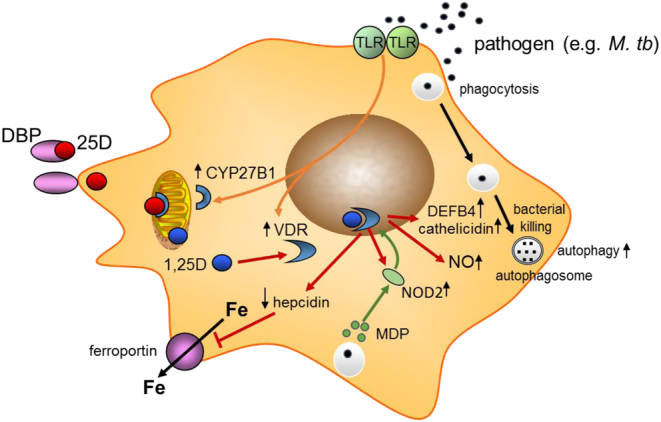Figure 1.

Antimicrobial actions of vitamin D. Schematic showing possible macrophage responses to microbial infection. Pattern recognition receptors such as toll-like receptors (TLR) signal responses to pathogens. This includes transcriptional induction of 1α-hydroxylase (CYP27B1) and the vitamin D receptor (VDR). Serum 25-hydroxyvitamin D (25-OHD) bound to vitamin D binding protein (DBP) allows intracellular access of free 25-OHD for conversion to 1,25 (OH)2D, which then bind to VDR. Transcriptional responses to 1,25 (OH)2D (shown with red arrows) include induction of cathelicidin and β-defensin 2 (DEFB4), NOD2, and nitric oxide (NO). Intracellular iron (Fe) is exported via ferroportin which is targeted for degradation by hepcidin. The bacterial cell wall product muramyl dipeptide binds to NOD2.
